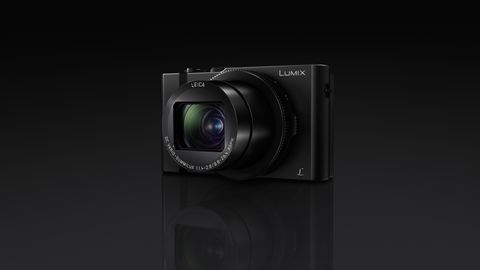Why you can trust TechRadar
Performance
- 6fps burst shooting
- Modest start-up time
- 260-shot battery life
It takes just over a second or so for the Panasonic LX10 / LX15 to fully extend its lens and be ready to shoot after being powered up, which isn’t particularly speedy but is pretty much standard for such a model. There is a slight further delay if you immediately attempt to play images as the camera is turned on, roughly another second or so.
The lens moves relatively slowly through its focal range, although this is necessary when you consider how short it is. A welcome feature is that the zoom collar around the shutter release button is responsive enough to recognise very slight nudges, which makes it possible to adjust focal range in single mm increments for precision. You can choose to step the zoom should you only require commonly used focal lengths such as 35mm and 50mm.
The lens’s maximum aperture of f/1.4-2.8 compares favourably with rivals that only manage f/1.8 or so at the wide-angle end, although using the camera reveals that the maximum aperture closes down to f/2 by 27mm, and to f/2.8 by 32mm, which may disappoint some.

The LX10 / LX15's LCD screen remains impressively visible outdoors, and its resolution ensures details are reproduced with very good clarity; this is certainly one of the better screen on such a camera. The only time where it appears to fall short is when videoing certain subjects with defined details, as this can occasionally give rise to slight artefacts on the screen.
The option to tilt the screen upwards further improves its visibility when shooting at awkward angles, although rival models such as the Sony RX100 IV and Canon Powershot G7 X Mark II have a dual-hinge design that enables both upward and downward tilting; in the absence of the same here the screen struggles to be as usable when the camera is held above head height.
The screen is, however, pleasingly sensitive to touch, particularly when used to select the focusing point, although you quickly find this to be just as useful when selecting shooting options. You can also use touch to swipe through and zoom into images, although on such a small body it’s arguably more comfortable to use the physical controls to perform these tasks.
One small issue here is that the screen’s flushness with the rear of the camera, together with its proximity to where your thumb rests, means that it’s all too easy to thumb the screen inadvertently in its corner. Normally this wouldn't be an issue, but when the touchscreen is enabled this has the effect of shifting the focus point to this area.
Image quality
- ISO125-12,800, expandable to 80-25,600
- Solid metering system
- In-camera raw processing works well
In general, there appears to be little need to call upon the camera’s exposure compensation function in day-to-day shooting, as the default evaluative pattern copes well with a range of scenes. Shooting out on the street, the camera only underexposes a touch when faced with a larger area of bright skies, generally doing a fine job of maintaining a balance across the frame. Likewise, when capturing a predominantly dark subject, the camera isn’t easily foxed into delivering an overexposed image like so many others are.

Processing raw images shows a reasonable degree of latitude with such scenes too. Areas underexposed by a stop or so can be lifted successfully, and those underexposed even further are also able to be rescued, although only in conjunction with careful noise reduction and sharpening. Raw processing in camera is fairly well thought-out, with a good range of options including the choice to save files over existing versions or as new ones.

When using the Standard Photo Style, colours appear accurate and true to life, but perhaps without the punch expected. Switching to the Vivid option lends images a pleasing depth without oversaturating colours or making everyday scenes appear unnatural, and is also perfectly suited to the kinds of scenes in which you might make a point of calling upon it, such as nature and landscapes.
The camera’s Auto White Balance system is accurate under natural conditions, and does very well under combinations of artificial and natural light, with consecutively captured images showing excellent consistency.
Sharpness isn’t too bad at f/1.4, particularly in the centre of the frame where this is highest, although comparisons with the same images captured at smaller apertures shows that stopping down has a marked effect. The camera appears to be doing an excellent job to correct curvilinear distortion at wide angles too, with just a touch remaining in raw files compared with JPEGs. Furthermore, while some chromatic aberrations are visible in raw files, these are also generally low enough not to be objectionable.

Image noise is fairly absent at lower sensitivities, and only a gentle pattern affects images captured in moderate lighting when using mid-range sensitivities such as ISO1,600, one that could be easily processed out with any ill effects. Nevertheless, the noise reduction applied to images at higher sensitivities is not only destructive to details but also reduces colour saturation and leaves images lifeless. Unlike on many other cameras, high-ISO noise reduction is adjusted for each Photo Style rather than applied globally, although you can also tweak this as part of the camera’s Raw-processing functions post capture.
Current page: Performance and image quality
Prev Page Build, handling and AF Next Page Verdict and competition
